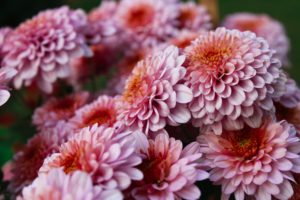
In TCM, both common colds and flu are seen as invasions of “wind”, combined with other pathogens such as heat and cold, entering the surface of our body. TCM’s “wind”, as well as being environmental wind, describes any abrupt change in the weather; this includes going in and out of air-conditioned buildings. The surface of our body is protected by “protective qi” and wind can temporarily disperse this protective layer. TCM’s “protective qi” is a little like the part of our immune system which helps prevent bacteria and viruses getting into our bodies. However, if our protective qi is weak, or the pathogen is strong, the pathogen can get into the surface of our body.
Our response to these external pathogen invasions reflects the strength of our protective qi. If our qi is strong, any cold symptoms will be intense but short lived, as our body is able to put up a good fight to quickly get rid of the pathogen. However, if our qi is weak, although the cold symptoms may be milder, the pathogen might stay longer in our system, or potentially travel deeper into our bodies. Even with good qi, a strong pathogen, such as those seen in flu epidemics, can penetrate to the deeper levels of our body.
In TCM, we know if the pathogen is in the surface of the body as alongside our cold or flu symptoms, we experience what is known as an “aversion to wind “. This is when however feverish or chilled we may be feeling, we still want to stay covered up. Often, aversion to wind is felt in the neck first. Simple measures, such as wearing a scarf to protect the vulnerable neck area is helpful if you are often going in and out of air-conditioned buildings.
In TCM, there are different types of common cold and flu:
Wind-cold
Cold freezes and constricts, closing the pores. This can lock wind-cold beneath the surface of the body, preventing it from being expelled; any cold or flu symptoms will be intense. With wind-cold, the feeling of cold is more pronounced than feverishness; this chilliness won’t improve by putting on more clothes or wrapping up in blankets. With wind-cold symptoms, you will be sneezing, have a blocked or runny nose, with clear white mucus. You might also have a cough with wheezing and watery white mucus. Your neck and upper back are likely to feel stiff and achy.
If you have a pre-existing “protective qi” deficiency, although your cold symptoms may be milder, they can persist for weeks or frequently re-occur.
In TCM, one of the main clues for deciding if the wind-cold condition is an excess or deficiency one is the degree of sweating. If you have “protective qi deficiency”, alongside your cold symptoms, you will have only slight sweating or clamminess.
Herbal medicine prescriptions treat each of these situations differently. Excess wind-cold prescriptions include warm pungent herbs to make you sweat, allowing your body to expel the wind-cold pathogen. Deficiency wind-cold treatments are primarily focused on strengthening the interior of the body to ultimately strengthen the “protective qi”; this way you are able to fight off the wind-cold pathogen.
Self-treatment
Wind-cold viral attacks are easy to treat if caught early, during the first day or two; try either of these two methods to make you sweat the pathogen out of your system:
15-minutes soak in a hot bath with Epson salts or a few pieces of fresh root ginger, then wrapping up in a towel and allowing yourself to sweat before rinsing off in a hot shower.
Alternatively, try bringing on a mild sweat by having a bowl of hot soup made with shallots and fresh ginger.
If you’re not able to get rid of the wind-cold quickly, it may transform into wind-heat. A sore throat is the first sign of this.
Wind-heat
Heat has a drying effect; wind-heat type cold and flu symptoms include sore throat, dry mouth, thirst, cough and nasal congestion with thick yellow mucus. Any feelings of fever you have will be stronger than your feeling cold. Although you will be feeling hot, you will still have an “a version to wind” and want to stay wrapped up. Wind-heat might also be diagnosed if you develop tonsillitis or acute bronchitis.
Like wind-cold, if your “protective qi” is strong then your symptoms will also be strong. Even though you feel feverish, you won’t be sweating. Other wind-heat symptoms include sore dry throat, thirst, headache, blocked nose and cough. Any mucus will be thick and yellow and difficult to cough up.
If your “protective qi” is weak, your symptoms will be milder, and you will be sweating a little.
In both cases, TCM’s herbal medicine approach is not to include herbs that would make you sweat out the pathogen. Instead, we use prescriptions containing Herbs to both clear wind-heat and protect the body fluids. Cooling herbs such as honeysuckle flower and Forsythia fruit might be used alongside dried Reed rhizome. Additional herbs can be added to address specific symptoms such as hacking cough or a swollen throat.
At the Jade Centre we see many patients each year to help them to manage their health over the Winter months. Contact us now and book an appointment to get the support you need,

